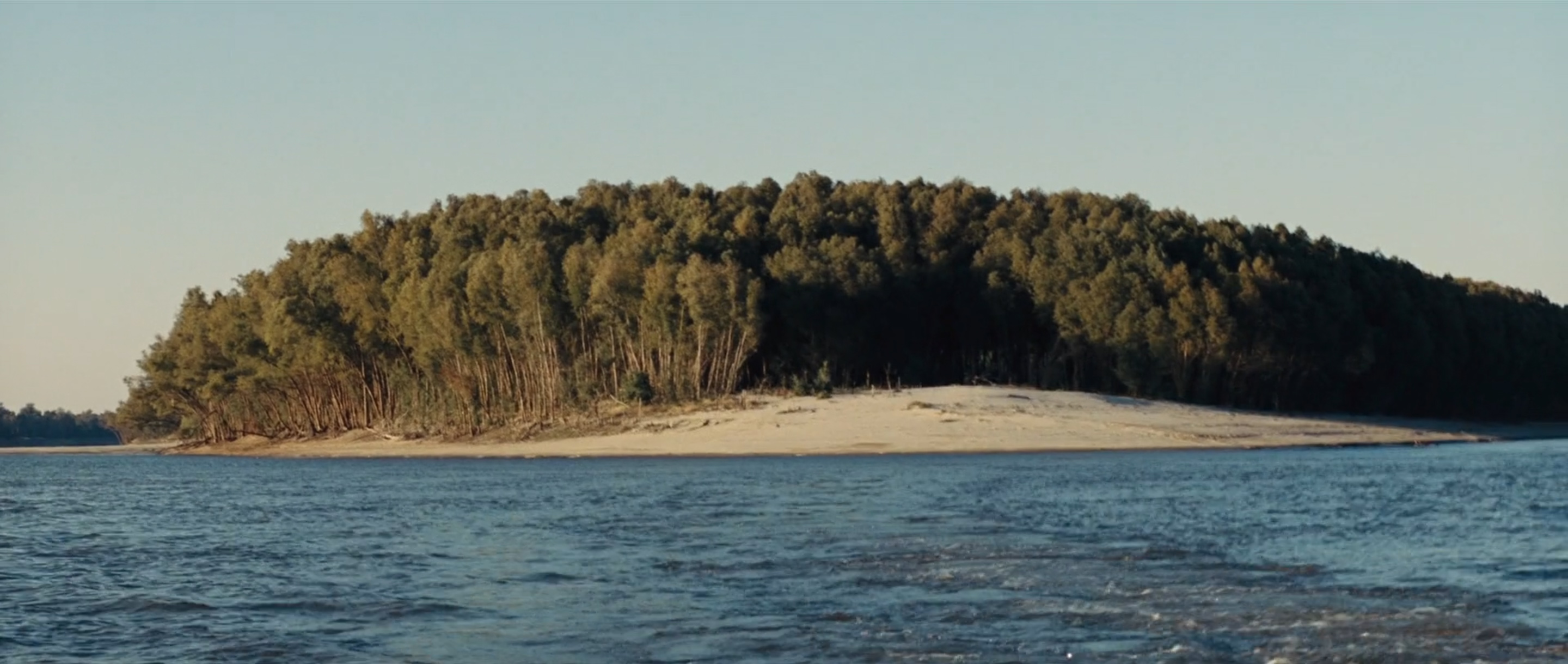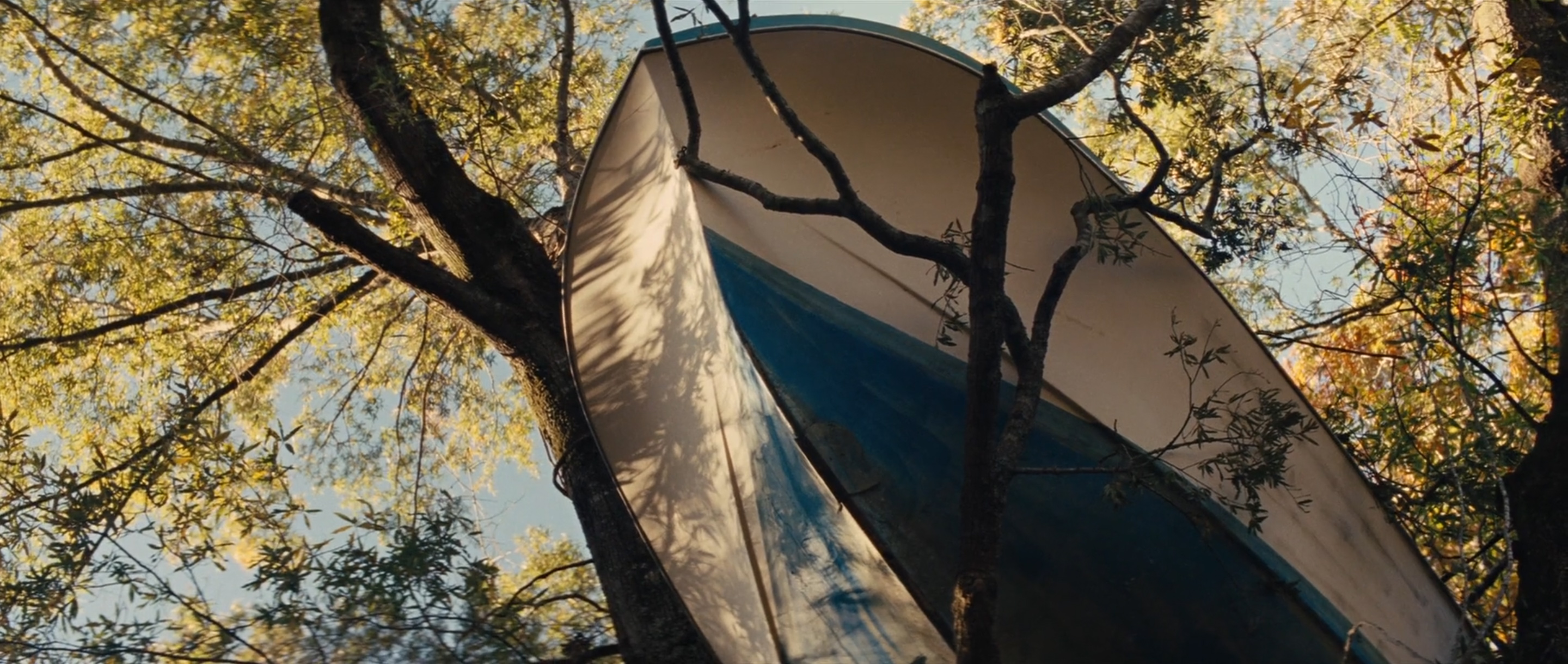Mud is Jeff Nichols’ third feature, released in 2012 after the resounding success of Take Shelter. The cinematography was driven by Adam Stone with whom the director maintains a lasting relationship. The action takes place in Arkansas on the muddy coasts of the Mississippi. It is a story of impossible love, a story of discovery of oneself and the world, in a contemplative atmosphere conveyed by a strong visual mastery.
A painting of the South
Many sequences carry a slightly surreal aesthetic, which heightens the intrigue and beauty. Mud showcases Nichols as a sharp and artistic visual storyteller. Filmed in his native Arkansas, he uses different techniques to create this truthful portrayal of Southern life, capturing the essence, beauty, and enchanting qualities of the landscape.
Jeff Nichols on the subject: “Well, you might feel this is cheesy in regards to the fact that I’m promoting Mud, but Mark Twain is one of my favorite writers of all time and he not only was able to effortlessly capture what the South was for him, but he was also able to capture, at least through Tom Sawyer, what childhood was like for him. Another author I really like is Larry Brown. His short stories are some of the truest depictions of Southern life that I’ve seen. I like them because they’re contemporary and they’re something I can relate to. I think the biggest problem is that the South is a lyrical place. It’s a place we want to romanticize, and I don’t think that’s always necessary.”
To the rhythm of Mississippi
Branchy banks, bushy islands, and people clinging to its river… the stage is set, and like the Mississippi, the movie slowly goes on. “This is the first time I use the steadicam” said Jeff Nichols. “I hate the camera on the shoulder, the image moving in all directions. I needed the camera to move elegantly. I wanted to make a film that seems easier to watch: the Mississippi flows at 5 km/h and is the most winding in the world. When we navigate on it, we don’t see where we are going.”
The river is a pure place of cinema, and in fact takes on a symbolic dimension. It is a dramatized skyline, as can be found in the last scene, facing Mud.
A personified Nature
The whole story is articulated around Nature, a beautiful and majestic Nature.
“I wanted to make a film that seems easier to watch: the Mississippi […] is the most winding in the world. When we navigate on it, we don’t see where we are going.”
Nichols’ use of the Mississippi as the main protagonist draws attention to its strong presence in southern life, along with its multifaceted personality and at times magical quality. The director demonstrates an unusual talent for filming landscapes, both for what they are and for dangers, promises and memory they seem to contain.
And what he does with landscapes, he does it with the atmospheres of the small town of Arkansas, as well as with the characters. This slow pace gives room for relationships to breathe and develop. The open expanses of the river, impenetrable forest and small towns are portrayed in order to build on their characteristics.
Nichols uses these different landscapes to signify tensions, build atmosphere and explore relationships. The town for instance, with plotting bounty hunters, has completely different associations than the wilderness that Mud inhabits. Nichols uses this effective visual backdrop to draw out relationships between the characters, especially Ellis and his father on their house boat, and the pivotal affinity between Mud and Ellis on the island.
Natural light
Mud’s photography is very contemplative and very authentic, and comes to remind us of the images of a certain Terrence Malick: “I wanted to focus more on movement than light. So I wanted to use natural light. For Days of Heaven, Terrence Malick has pushed his team to take risks. Today, we have much more sensitive films so we went for it. It was very difficult because everything moved, the river, the sun. The light was constantly changing but the beauty of the place has also done a lot. And as if by magic, the sun was still behind Matthew [McConaughey]’s head. We joked that it was part of his contract” said Jeff Nichols.
Perched on a tree
A boat, lodged in the branches of an old tree, and this poetic visual conjures up a sense of wonder and surreality. It was one of his former teachers who gave Jeff Nichols the idea of the boat on the tree. The latter tells: “We were talking about the script and I told him, «If you were a boy, why would you go to an island in the middle of the Mississippi?». He replied, «There could be a boat perched in a tree after a flood.» We really placed a boat at the top of a tree. When the crane dropped it, it was perfect, magical, almost unreal. Every day, we needed several hours to get on the set. We were crossing woods and suddenly we came across this show.”
It is a movie where human relationships are cradled in an omnipresent Nature. The contemplative side reinforces its rich aesthetic. Mud received very good reviews at the Festival de Cannes, and remains one of the most demonstrative achievements of Jeff Nichols’ talent.

















































